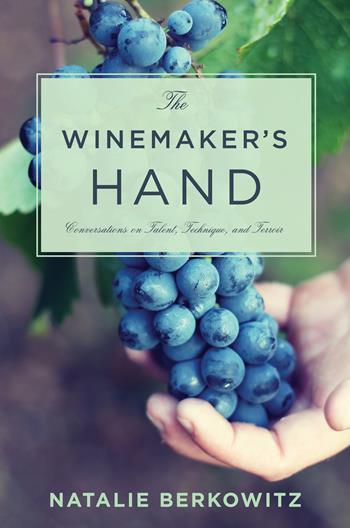Mastering the Restaurant Wine List — Natalie Berkowitz
“Think of a new wine as a blind date. While you might not want to make it permanent, a relationship with a new varietal or label need only last for an evening. Conversely, it might be love at first sight, something worthwhile going out with it again.”—Natalie Berkowitz
The following post is by Natalie Berkowitz, author of The Winemaker’s Hand: Conversations on Talent, Technique, and Terroir. (Save 30% on The Winemaker’s Hand by using the coupon code WINBER when ordering from our site.)
Wine lists make people nervous, especially newcomers to the world of wine. It’s impossible for anyone, including masters of wines (dare I make such a challenging statement?) to be familiar with every label from every wine region around the world. A leather-bound tome chock-full of choices is sure to cause an uncomfortable jolt, even to sophisticated enophiles. A difficult burden lies on the individual at the table who is called on to make the choice and others at the table are relieved to be free of the task. Generally speaking most selections will be perfectly suitable.
It’s good to take control sometimes, particularly in the company of a big spender with deep pockets who always picks the foie gras supplement on the menu and who equates high price with quality. Equally troublesome is the cheapskate. Whoever the burden falls on whether the most initiated, most willing or conscripted, remember the moderation is the key word. To paraphrase Shakespeare, neither a miser nor spendthrift be. Be considerate of other people’s wallets. Target middle-priced wines, not the cheapest on the list or the most expensive. If the restaurant is ethnic, it’s a good idea to pick wines of the region.
Complications arise when two or more people order different appetizers or main courses. The conventional wisdom is “red with meat and white with poultry or fish,” but that doesn’t help under those circumstances. And then, rules are meant to be broken. Particular preferences, allergies or prejudices compound the issue. When making a choice gets out of hand, a simple solution is to order wine by the glass or a bottle each of a red and a white wine.
Here are some helpful tips:
Rely on the sommelier for assistance in choosing a wine. Perhaps the most important relationship in a restaurant is the one between customer and sommelier. Today’s increasingly complex menu preparations require an avid partnership between the master of the kitchen and the keeper of the wine cellar. The first order of business for the latter is to develop a sympathetic understanding of the chef’s culinary creations. Unfortunately, it is rare to find professionals in kitchen and dining room who overcome their territorial turfs and often-oversized egos. The sommelier theoretically should play a supporting role to the chef, becoming intimately involved with the philosophy and tastes of what comes through the kitchen’s swinging doors. Yet the best interests of customers are served when the two work in harmony to determine the best match between wine and food.
What assistance should restaurant patrons expect from sommeliers? Suggestions for a satisfactory wine and food pairing. Help deciphering a wine list loaded with unfamiliar labels and varietals from wine regions around the world. (Ah, for the simpler days of red- sauced Italian food and Chianti poured from straw-covered bottles.)
In the absence of a sommelier, realize there are friendly varietals. A well-crafted Sauvignon blanc can display a range of flavors that generally is a crowd-pleaser. Merlot is currently at the head of the pack in the red wine category and while it was often the axiom that Cabernet sauvignons were difficult to drink young, new techniques of vinification make them more accessible. Silky Pinot noirs are a great choice for four disparate dinners. Spicy, perky red Zinfandels (not the white kind that are too sweet to go with food) or well-crafted, un-oaked Chardonnays fit the bill. Argentinean Malbecs are quite the current rage as an excellent match with hearty foods.
Think of a new wine as a blind date. While you might not want to make it permanent, a relationship with a new varietal or label need only last for an evening. Conversely, it might be love at first sight, something worthwhile going out with it again.
It’s appropriate to ask for a taste of one wine if you order by the glass.
If a waiter breathes down your neck to order, politely insist on a few minutes. Don’t be intimidated by a wait staff person who wants to speed things up by offering some suggestions. Note that you probably know more than the average waiter does.
Remember there is only one reason to send back a bottle of wine. It has to be spoiled. Sometimes aromas are funky and way off. Wait a few minutes. If the bad odors persist, smelling like wet sponge or something equally unpalatable, politely ask for an exchange.
Lastly, recognize wine enhances a dining experience and makes a meal more festive and congenial. Remember ordering a bottle of wine isn’t a most crucial life decision but part of a lovely dining experience.



